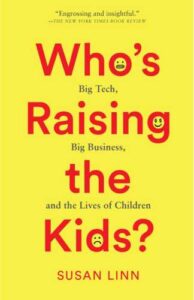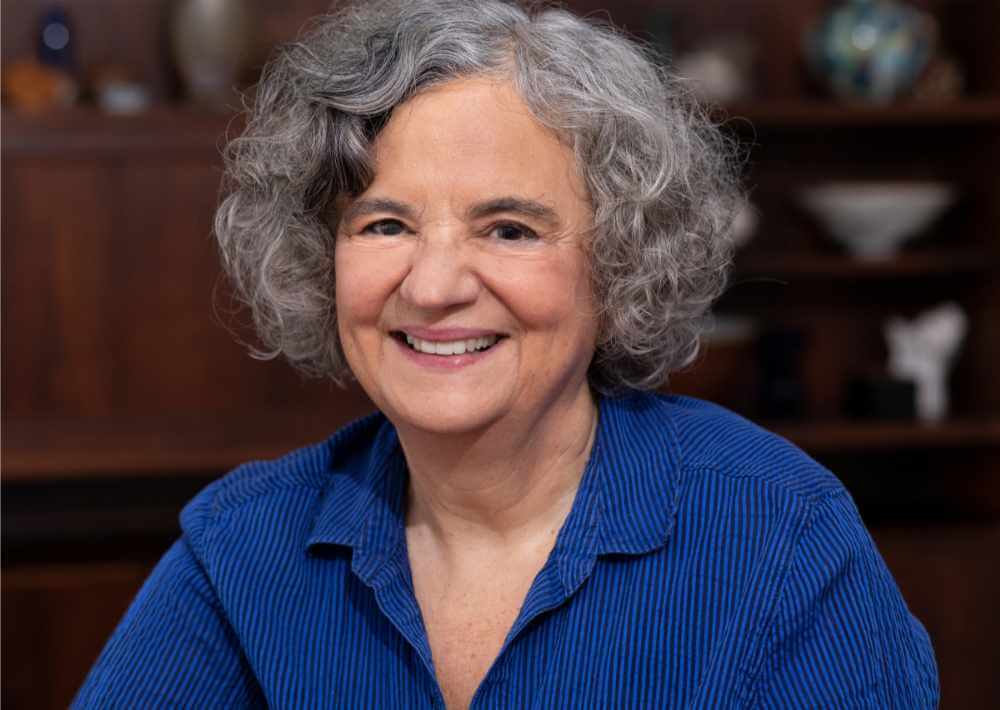This post was last updated on October 2nd, 2023 at 08:58 pm
Remember when Saturday morning cartoons were considered to be a harmful influence on children? Child-advocacy groups in the 1970s and ’80s argued for banning shows, such as G.I. Joe and He-Man, because they served as little more than 30-minute toy ads. The problem seems almost quaint against the backdrop of today’s media landscape, in which Big Tech can target children with ads and product promotions all day, every day. Among those sounding the alarm about Big Tech’s influence is Dr. Susan Linn, a psychologist and expert on creative play.
Big Tech—the overarching term for a collection of Silicon Valley-based companies such as Meta, Apple, Google, and Amazon—has inserted itself into nearly every corner of people’s lives. For children, their growing dependence on technology has come at the expense of more traditional forms of play, according to Linn.
Instead of using their imaginations, many children have been steered toward spending large amounts of time on screens. “What we have today is this incredibly compelling and addictive technology, combined with a basically unregulated tech industry, which can pretty much do anything they want when it comes to kids,” she said during an interview with Frugalmatic.
Linn, who became known as a creative play advocate through her multiple appearances as a ventriloquist on Mister Rogers’ Neighborhood, believes Big Tech’s sophisticated marketing tactics have stacked the deck against parents. In her new book, “Who’s Raising the Kids? Big Tech, Big Business, and the Lives of Children,” Linn makes the case that Big Tech has been trying to play the role of parent, viewing it as a profitable business opportunity.

Parents might not be able to completely shield their kids from Big Tech, but they can take steps to reduce its toxic influence. In her book, Linn offers advice for parents of kids at every age, starting with infants and toddlers. If one theme emerges from her parenting advice it is that “less is more.”
Simply creating more “downtime” for children is helpful, she says. Periods of unstructured play give children permission to be creative. One reason children have less downtime today is that companies can’t easily monetize it. “Creative play is not lucrative. Children who are creative can use a toy in multiple different ways. They don’t need as many toys as kids who aren’t or haven’t been allowed to be creative,” Linn told Frugalmatic.
Also, don’t underestimate the value of silence. “Creative play requires silence. And silence is really at a premium now in our culture. We are constantly bombarded with noise,” she said.
Read more excerpts from the interview with Dr. Susan Linn below. Responses have been edited for clarity and length.
Frugalmatic: You mention in an article published in the New York Times that stretches of having “nothing to do” are critical for allowing children to develop creatively. Why is downtime so important?
Susan Linn: Creativity and creative play for children is the foundation of learning and critical thinking. Self-expression is a means of identifying who you are and how you’re different and similar from your environment. It separates you, in some ways, from your environment. When children are playing creatively, they’re putting forth their own ideas. It’s a way of mastering what’s going on in their lives. It’s developing a sense of competence and a sense of control over what’s going on in their lives.
One thing creativity does is prevent us from acquiescing, unthinkingly, to commands. Creativity is very important in a democracy, and in a true democracy it’s allowed to flourish. It can’t flourish in a dictatorship because a dictatorship is all about obeying whatever is told to you. In a democracy, there are rules and there are things we have to do, but there’s also room to experiment and try new things.
Read: How to raise a smartphone-free child
F: You gave a TEDx talk during which you discussed how “the best toys are 90 percent child and only 10 percent toy.” What did you mean by that?
SL: A good toy just lies there until a child picks it up and does something with it. A good toy can be transformed into lots of different things. It can be used in multiple ways. And a good toy, how to use it, comes more from the child than the toy itself.
That’s why I think we need to differentiate from what I would call a good toy and best-selling toys. So many of the best-selling toys actually limit creativity rather than encourage it. They do that by being linked to media programs. If a toy is based on a media character, the kids already know who that toy is, what it sounds like, what it does, where it lives. They know all about it, so their choices are really limited. And there is research suggesting kids play less with toys linked to media, especially if they’ve recently seen the program.
F: I am amazed at the number of elementary school kids who have smartphones. At least where I live, it seems like a majority of kids are carrying a smartphone by the sixth grade. What do you make of this trend and what effects on childhood development have you noticed?
SL: Many years ago, I was at a marketing conference, and it was before smartphones. It was when there were just cell phones. Basically, what they were saying was that the cell phone market was saturated for adults. It wasn’t going to get any bigger. The teen market was just about saturated. And markets have to expand, so the next one was children and marketing them to children. And that’s true with smartphones as well. They’re marketed to parents as a safety device, and they’re marketed to kids as cool.
The problem with younger children and smartphones is that they don’t have the same judgment as adults. The frontal cortex, which is where judgement sits, doesn’t develop until the mid-20s, actually. So they are confronted with this incredibly compelling device that really could take them anywhere. In fact, these technologies are being marketed to babies, really. The goal is to hook very, very young children on screens.
F: For those parents who want to promote creative play for their children, what would you say is the best thing for them to do for their kids?
SL: Provide them with the time, the space, the inspiration, and the silence for creative play. If you can, encourage them to play outdoors. Provide toys that don’t tell kids what to do, but encourage kids to imagine what to do.
Because the primary purpose of screen devices is to sell us things, and because they do that by basically being in a war for our attention, it’s really important to limit screen time for kids. The World Health Organization and pediatric associations around the world recommend no screen time for babies and toddlers and limited screen time for older kids.
Parents have to watch their own screen time. Some families make sure there are no devices allowed at meals, for instance. Keep devices out of kids’ rooms. Some families have, when you come into the house, a place for you to deposit your smartphone. There’s an organization called Wait Until 8th, which helps parents band with other parents in their community to agree not to give kids smartphones until eighth grade. It’s hard to do that alone, so it helps if you have other people in your community.

